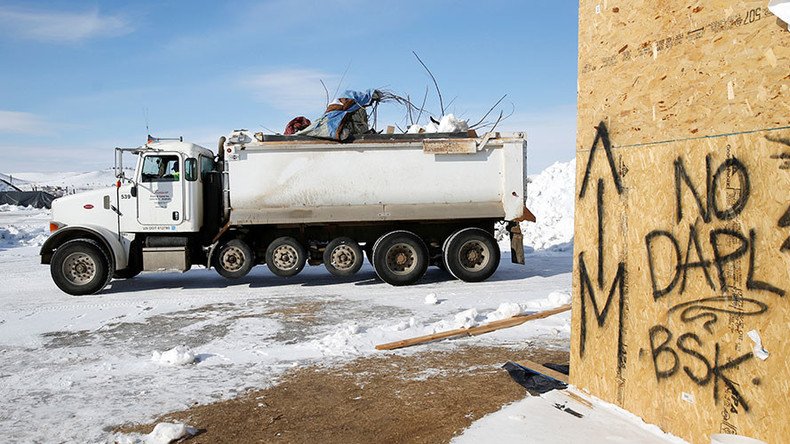Dakota Access Pipeline protest camps deteriorating

The conditions where people are camping to protest the Dakota Access Pipeline are rapidly worsening, and activists could be facing a serious health crisis, according to the governor of North Dakota and the state health department.
A press release published by Governor Doug Burgum (R) said the US Army Corps of Engineers would be visiting the campsite that sits on federally owned lands “to assess the situation and determine what resources are needed to complete the environmental cleanup before potential major spring flooding arrives.”
5.4 miles of creek polluted by North Dakota oil pipeline spill 150 miles from #StandingRock#NoDAPLhttps://t.co/3r95nb0snKpic.twitter.com/z7qWmasHMx
— RT America (@RT_America) December 15, 2016
The crisis emerged when high temperatures led to melting snow on frozen ground, which could potentially submerge the camp because it rests on a floodplain. As a result, the governor called for federal assistance in cleaning up the campsite in the form of the Army Corps.
“Today’s assessment by the Army Corps of Engineers is crucial to accelerating the cleanup process, so this land can be properly cleared of garbage, structures, vehicles and human waste before it washes into the rivers,” Burgum said. “We cannot afford to wait any longer.”
A particular concern is of garbage and human waste flooding into the Cannonball River.
“If you’re really trying to protect the river, it is imperative we get that stuff cleaned up before we see a flood,” the governor said.
The protesters are attempting to block the building of an oil pipeline that would transport 450,000 barrels of crude oil under Lake Oahe, an important water source for the nearby Standing Rock Sioux tribe.












